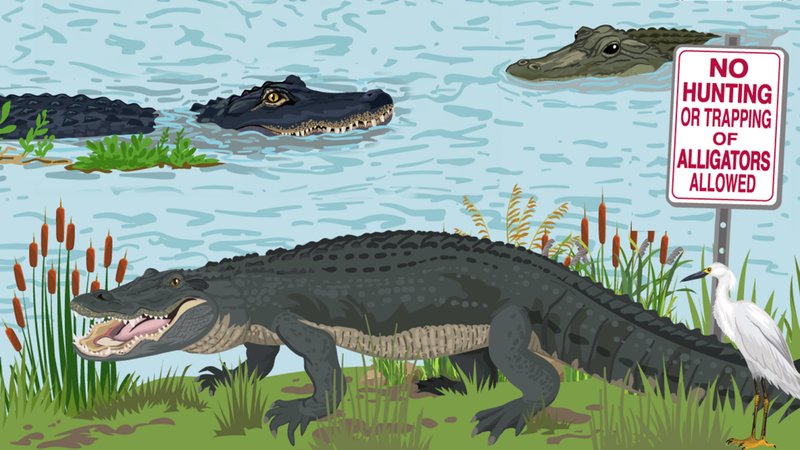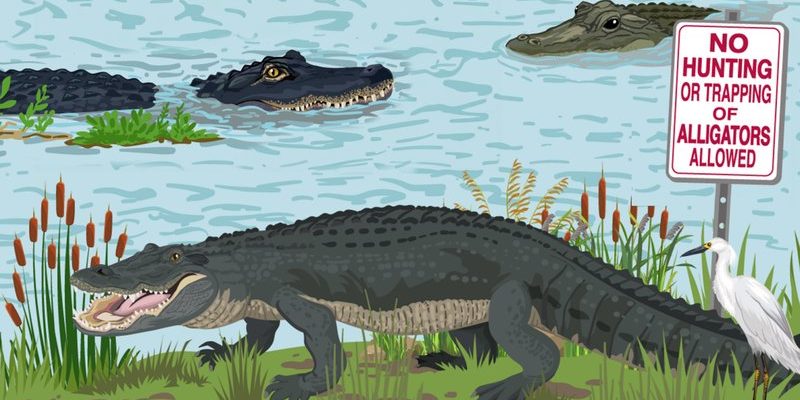
This journey of the American alligator is not just about survival; it’s also about the efforts made to protect them. Just like how we might cherish a remote that controls our favorite TV, we need to cherish and safeguard our wildlife. So, let’s dive into the topic of whether the American alligator is endangered and explore the conservation efforts that are underway.
The Status of the American Alligator
The American alligator (Alligator mississippiensis) was once listed as endangered due to overhunting and habitat loss. In the 1960s, their numbers had dwindled so low that it raised serious alarms. Imagine a favorite character suddenly disappearing from a story. Without them, the ecosystem suffers a similar fate. Thankfully, through conservation efforts and laws that prohibited hunting, these awe-inspiring reptiles made a remarkable recovery.
Now, the alligator is listed as “threatened” rather than endangered. This means they’re still vulnerable, but their populations have improved significantly. According to estimates, there are about 1.5 million alligators in the U.S. today! Isn’t that a relief? They are no longer on the brink, but their future still hangs in the balance, mostly due to habitat loss and climate change.
Key Factors Threatening Alligator Populations
Even with the positive news, there are ongoing threats to alligator populations. Let’s break down these challenges:
- Habitat Loss: Wetlands are shrinking due to urban development and agriculture. Alligators rely on these areas for breeding and feeding. Losing these habitats is like taking away a home where they’ve lived for ages.
- Pollution: Contaminants in water sources can harm alligators and their prey. Toxic substances can disrupt their lifespan and reproductive success. It’s akin to how pollution can make us sick; it affects them too.
- Climate Change: Rising temperatures and changing water levels threaten alligator habitats. Increased flooding and droughts can disrupt breeding cycles and food availability. Imagine if your favorite spot for a picnic suddenly became a swamp; it would ruin the outing!
Conservation Efforts: What’s Being Done?
Fortunately, many organizations are dedicated to protecting the American alligator. Let’s take a closer look at these efforts:
Legal Protections
Federal and state laws have been enacted to protect alligators from overhunting. The Endangered Species Act of 1973 was a game-changer, helping to restore populations. This legal framework works like a shield, allowing alligators to thrive without the constant threat of being hunted.
Habitat Restoration
Organizations and government agencies are working hard to restore wetlands and create suitable habitats for alligators. This includes replanting native vegetation and removing pollutants from water sources. Think about it as a gardener nurturing a garden—making sure every plant has the right conditions to grow strong and healthy.
Public Education and Awareness
Education plays an important role in conservation. Many groups are focused on raising awareness about the importance of alligators in ecosystems. By teaching communities about these reptiles, there’s hope for greater respect and understanding. It’s like teaching the next generation to cherish a beloved family recipe, ensuring it’s passed down and celebrated.
The Role of Alligators in Their Ecosystem
Understanding the importance of alligators is crucial. They are often referred to as “keystone species,” meaning they play a significant role in maintaining the balance of their ecosystem. Here’s how they contribute:
- Control Prey Populations: Alligators help keep populations of fish, turtles, and other aquatic animals in check. Without them, these populations could grow uncontrollably, leading to overgrazing of vegetation and disruption of aquatic ecosystems.
- Creating Habitats: Their nesting behavior helps create holes or “gator holes” in wetland areas, which can hold water during dry spells. This benefits other species, including birds, fish, and amphibians. It’s like a natural reservoir, supporting various life forms.
- Indicator Species: Healthy alligator populations indicate a well-functioning ecosystem. If their numbers decline, it’s a sign that something’s off in the environment, like a canary in a coal mine.
How You Can Help
So, you might be wondering how you can contribute to the conservation of the American alligator. Every little bit helps, and there are simple steps you can take:
- Support Conservation Organizations: Donate to or volunteer with groups focused on wetlands restoration and wildlife rescue. Your time or resources could make a big difference.
- Spread Awareness: Share information about alligators and their role in the ecosystem. The more people know, the more they can help!
- Practice Responsible Recreation: If you’re enjoying the outdoors in alligator habitats, follow guidelines about feeding or disturbing wildlife. Respect their space, just as you’d want your own space respected.
The Future for American Alligators
The future of the American alligator is intertwined with our actions. While they’re not endangered anymore, their journey continues to depend on our commitment to conservation. It’s like being part of a long relay race: passing the baton of responsibility to the next generation to ensure these remarkable creatures thrive.
Let’s celebrate the recovery of the American alligator, but also remember that they need our support to protect their habitats. As we navigate the challenges of the modern world, it’s essential to prioritize the health of our ecosystems for future generations. Together, we can ensure that the American alligator continues to bask in the sun for years to come.

